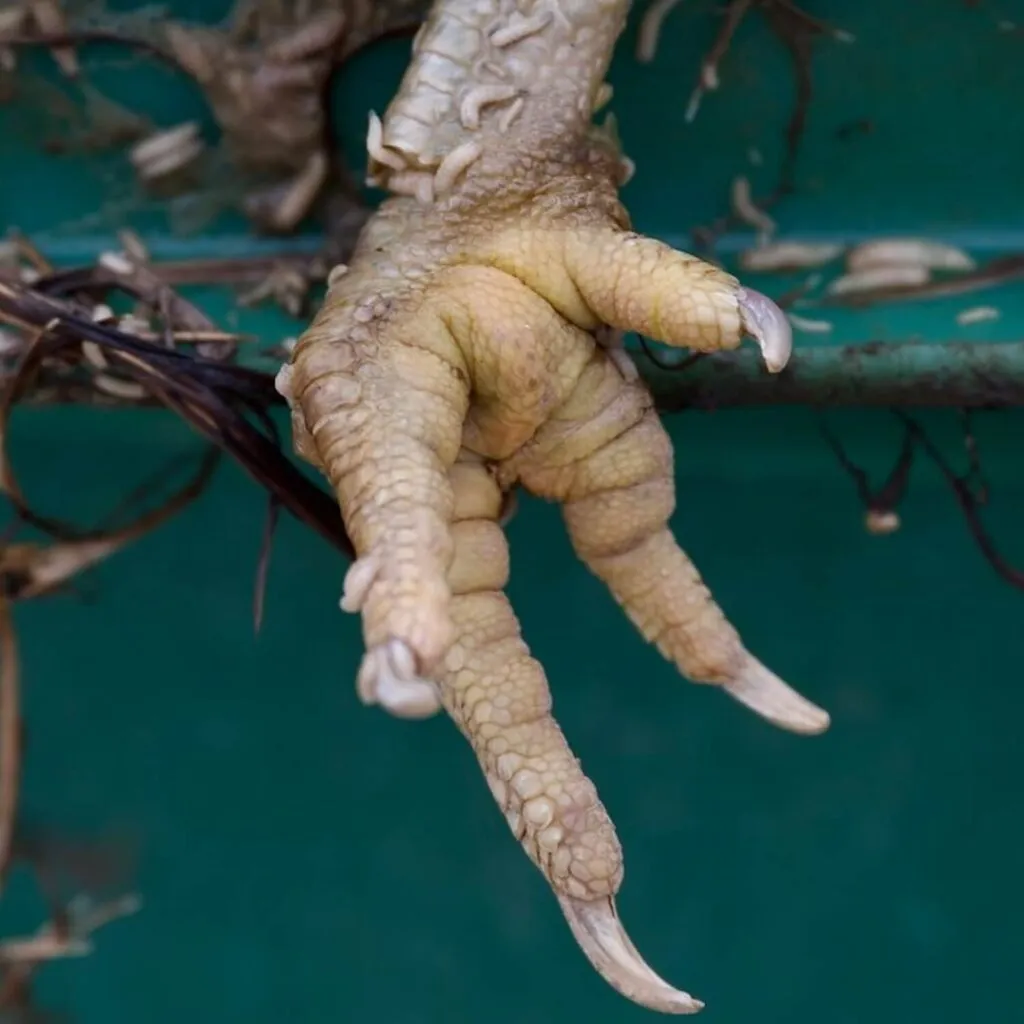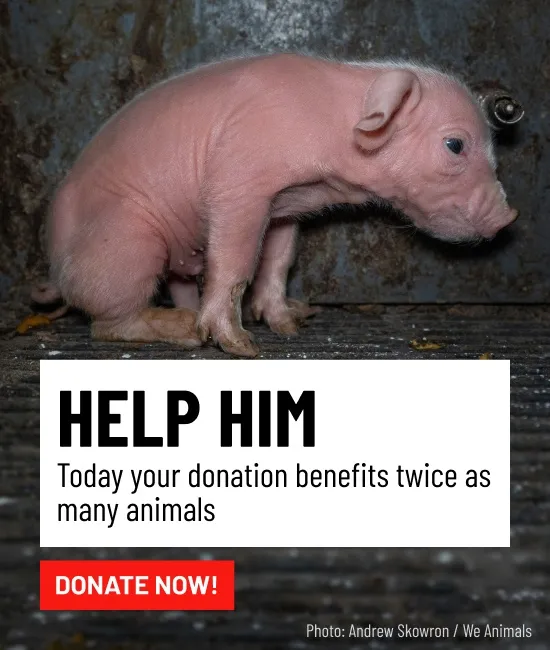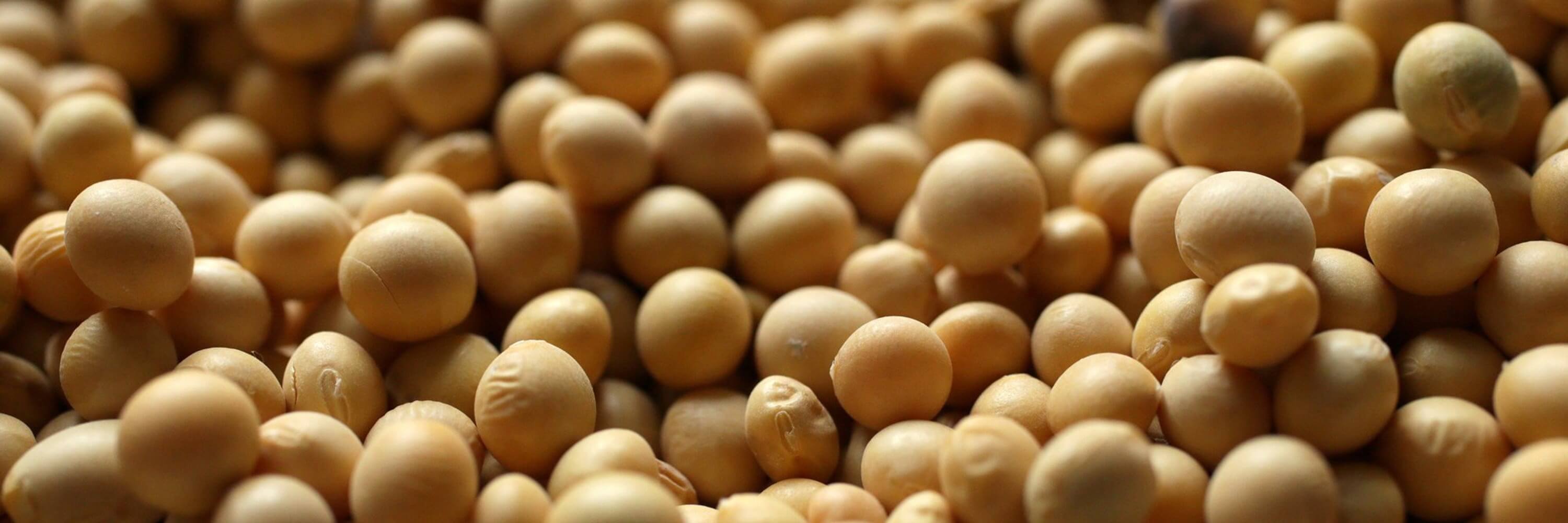
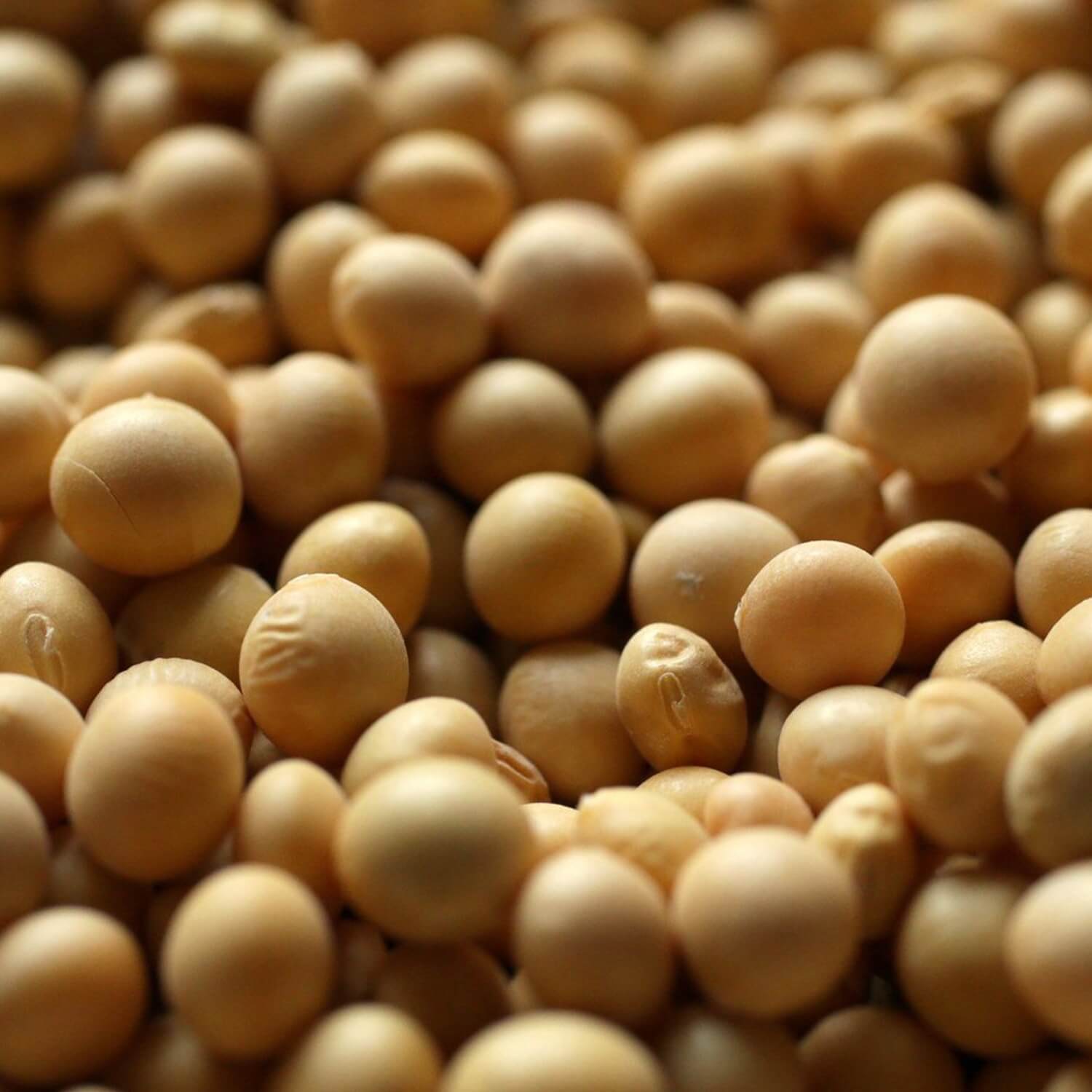
Soy and Deforestation: Everything You Need to Know

In recent years much of the conversation around soy has been heavily focused on deforestation and climate change. And because soy is often a key ingredient in plant-based meals, it is a common misconception that foods promoted as meat and dairy substitutes – such as tofu and soy milk – are driving deforestation. But what is the truth? In this article we answer the most Googled questions about soy, and debunk the main myths about this much-debated bean.
What is soy?
Soy is a very versatile species of legume which originated in East Asia. It arrives in supermarkets in many forms: soy milk, soy sauce, tofu, tempeh, miso and edamame are just a few examples of the products made with it.
Over the past 50 years soy production has exploded, increasing by more than 13 times! While in the 1960s we were producing 20 to 30 million tonnes of soy per year globally, now we produce 350 million tonnes. To put this in perspective, this is the equivalent of the weight of 2.3 million blue whales.
This boom in production of soy inevitably led to an increased demand for crop land, sadly at the expense of our planet’s precious forests.
So many might assume that this humble bean is driving deforestation to feed the human population. But is this really the case? Before jumping to any conclusions, we first need to understand where soy is grown and why exactly its production has boomed.
Where is soy grown?
The biggest soy producer worldwide is Brazil, accounting for approximately one-third of global soy production.
Over the past three decades, Brazil’s soy production has grown exponentially. But why?
Some believe that this growth is due to an increased demand for soy products consumed by people who follow a plant-based diet. This fuels the misleading narrative that plant-based foods like tofu and tempeh, and dairy substitutes like soy milk, are actually worse for the environment than animal products. But as we explore the facts further, it’s clear that this is not the case.
In fact, only 7% of global soy is used for products like tofu and soy milk, while more than three-quarters – a staggering 77% – is used as feed for animals farmed for human consumption.
According to an analysis published by the University of Oxford’s Food Climate Research Network, over one-third (37%) of global soy is processed into feed for farmed birds, including chickens bred for their flesh and hens used for their eggs; one-fifth (20%) to pigs; 6% to farmed fish; and 2% to cows.
The remaining 16% of global soy is used to produce soybean oil and for industrial purposes, such as biofuel.
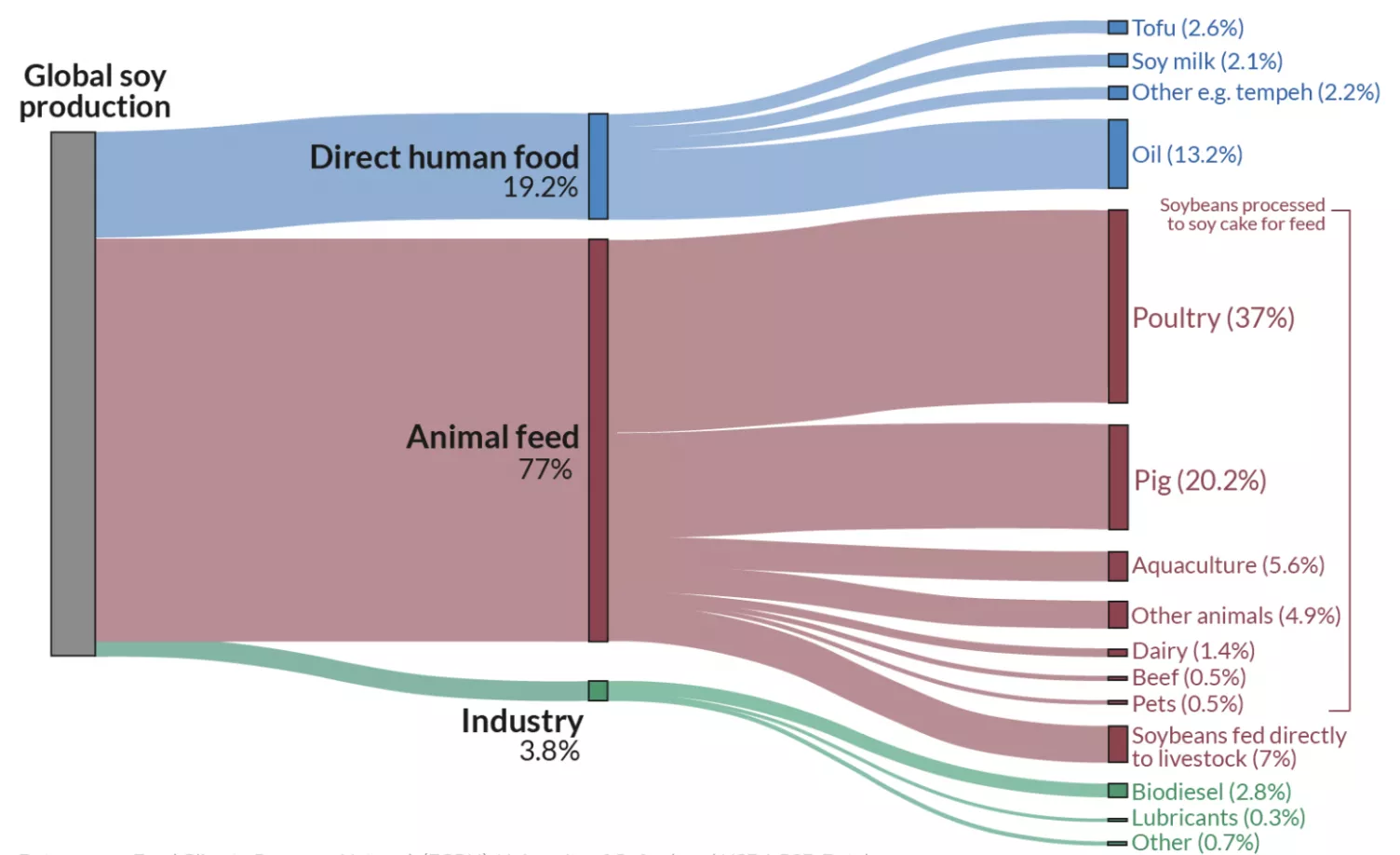
With our global population rising, and meat production more than tripling over the past 50 years, it is not surprising that soy production has increased so dramatically.
So, we know what soy is, where it comes from and what the main driver of its ever-increasing production is. But what about the most pressing question of all: what’s the environmental cost of this boom in soy production? Are luscious forests really chopped down to clear land for soy plantation? Where do countries like Brazil find the space for so many million tonnes of soy?
Is soy bad for the environment?
Brazil is home to some of the most threatened ecosystems: the Amazon rainforest; the Pantanal – the world’s most extensive continuous wetland on the planet; and the Cerrado – the most diverse savannah.
To date, we have lost more than 20% of the Amazon rainforest, 25% of the Pantanal and 50% of the Cerrado to deforestation. The situation is so alarming that – for the first time ever – the rainforest is producing more carbon dioxide than it can absorb.
Because Brazil is one of the world’s biggest producers of soy, deforestation in the country is rife.
With soy production increasing dramatically, there has been an urgent need for land and it has proven impossible to keep up with production in a sustainable way.
The area used to grow soy worldwide has more than quadrupled! Looking specifically at Brazil, it has tripled.
But was this at the expense of the Amazon rainforest and Brazil’s other ecosystems?
And while soy production is wreaking havoc on our planet’s land and natural resources, it’s not the only one. According to a study published by Science Advances, the main driver of deforestation is in fact the expansion of pasture for raising cows for meat.
Soy is a key contributor to the forest loss, not for plant-based products, but to prop up the destructive animal agriculture industry and feed the billions of animals farmed every year.
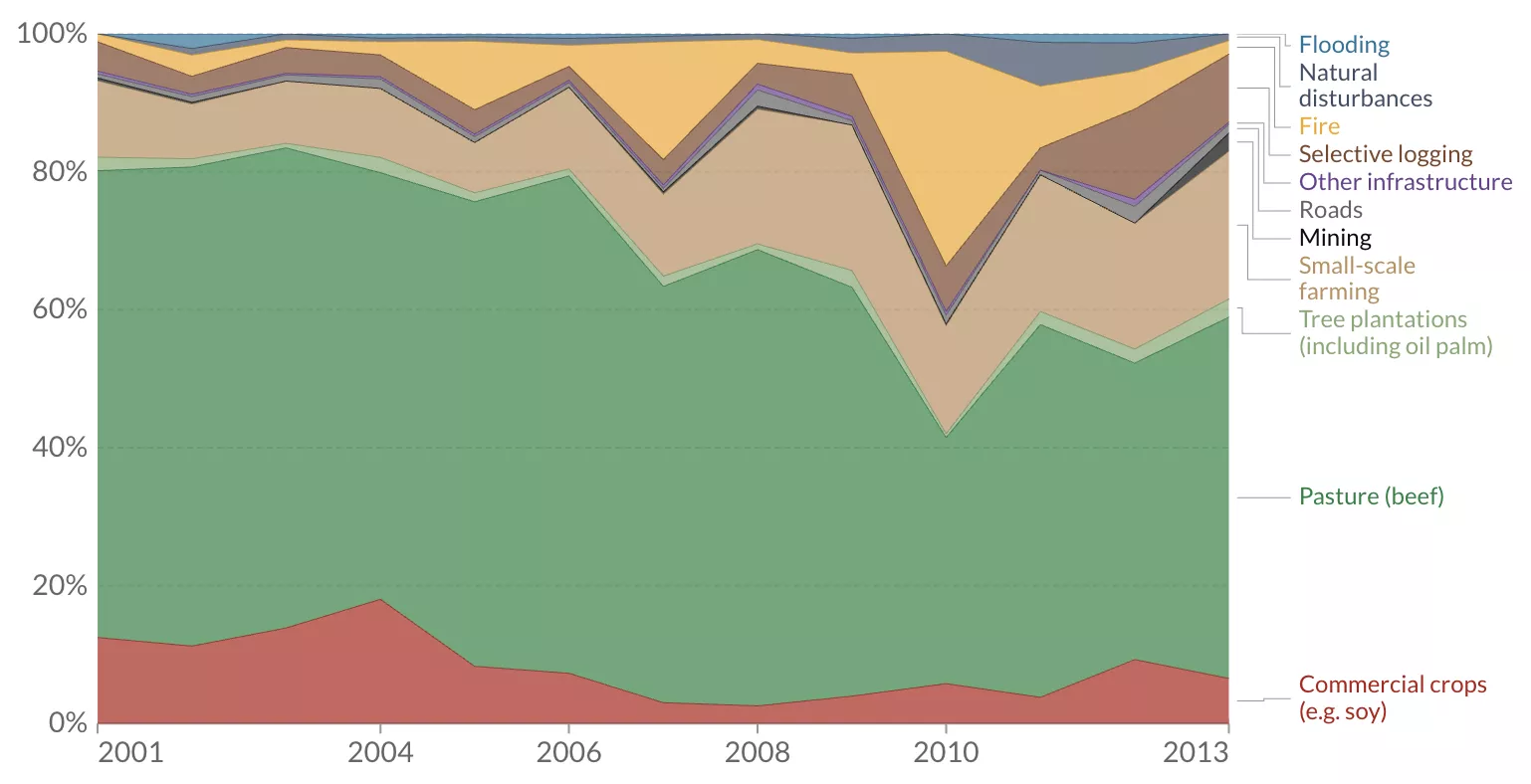
Whether it is to clear land for grazing cows or to plant soy for animal feed, today, animal agriculture is responsible for more than 80% of the deforestation in Brazil.
Since 2013, the deforestation rate in Brazil has been on the rise. In 2019, the number of man-made fires in the Amazon increased by 84% and these rates have not slowed down since.
See our investigation into Amazon forests burned for the animal agriculture industry
What can you do?
As several studies have shown, the vast majority of deforestation in Brazil is driven by the meat industry.
With animal agriculture being the single biggest driver of deforestation and habitat loss, the best way to combat these environmental catastrophes is to stop eating animal products. As consumers, we hold the power in our hands and in our wallets.
Millions of people in the UK and around the world have made the switch to a sustainable plant-based diet. Together, we’re helping to accelerate a transition towards a new food system that protects animals and the planet.
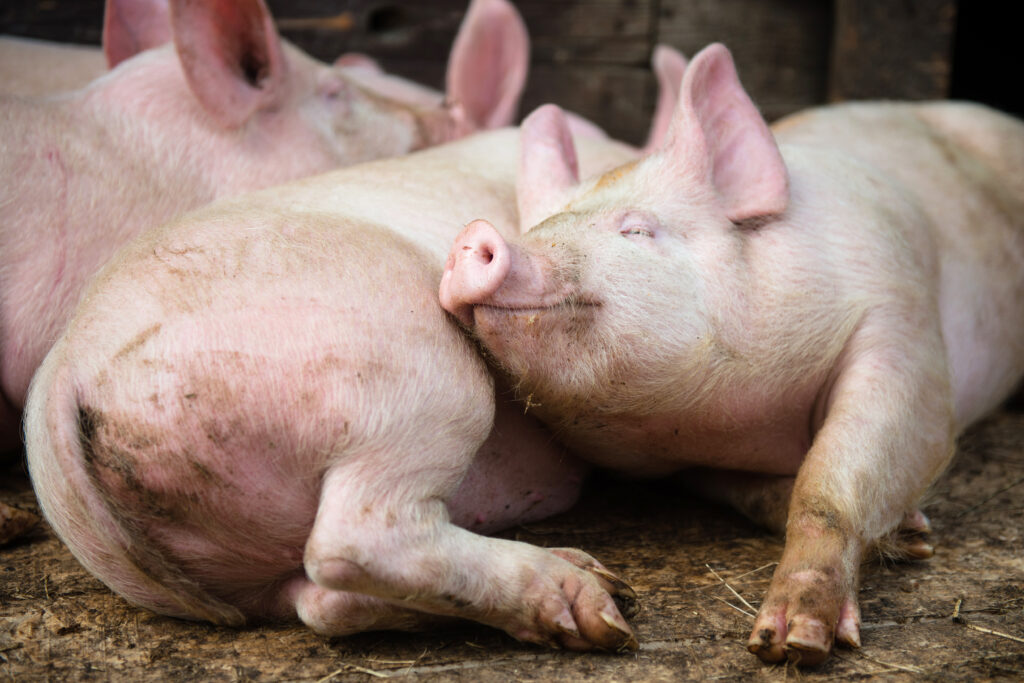
START YOUR PLANT-BASED JOURNEY TODAY!
Farmed animals have rich emotional lives and unbreakable family bonds. They deserve our protection. You can help build a better future for animals by starting your plant-based journey today!
Recommended


